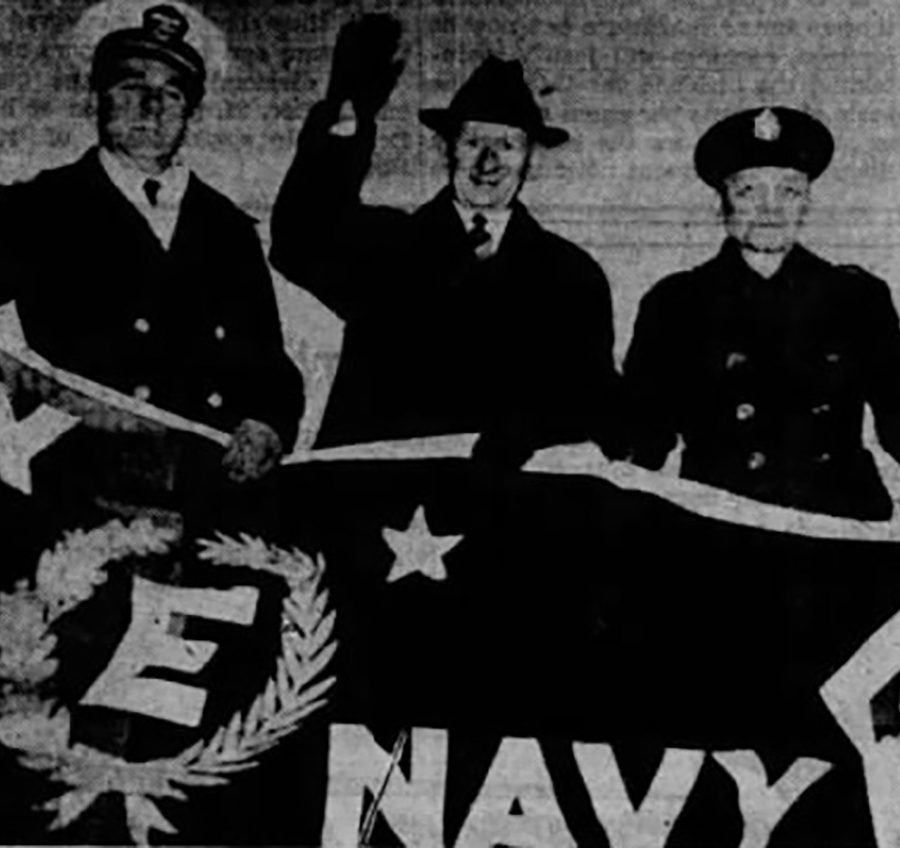A manufacturer of weapons of war and a cultivator of dahlias. Fund at The Trust supports a variety of charitable causes.
Leo L. Pollak (1883-1972)
From 1923 to 1946, Leo Pollak headed a company that manufactured depth charges for the Navy, as well as bomb racks, smoke screen generators, and mine cases for the Army. At the height of World War II, the Pollak Manufacturing Company in Kearny, New Jersey, employed as many as 4,500 workers at six munitions plants. By the end of the war, the company had garnered five “E” for Excellence awards, the military’s highest honor for ordnance production.
In contrast, Leo grew award-winning dahlias and roses in his garden at his Montclair home.
Leo Lawrence Pollak was born in New York City on May 17, 1883, to Theresia Wolff and Charles Pollak, immigrants from Austria. Charles worked in a factory, banding and packaging cigars. Leo had an older brother, Emil, and a little sister, Selma.
Leo graduated from City College in 1902 and received an electrical engineering degree from Columbia University in 1905. He worked for several companies, including F. H. Lovell Company, manufacturers of railroad lighting supplies in Arlington, New Jersey, and Dressel Railway Lamp and Signal Company in New York City, before founding Pollak Manufacturing.
Even while producing war-time equipment for the military, Pollak was looking ahead and designing products for peace time. A 1944 ad in the Philadelphia Inquirer touted “The Pollak Version of Re-conversion.”
“The revolution in materials and product design when peace comes may not be as fanciful as some reports have stated,” the ad read. “Pollak has already developed some new and needed products, which are awaiting V-Day for the start of production.”
Another ad boasted about the company’s “E” awards for Excellence: “The very same kind of service and skill the Army and Navy have recognized can work for you when the war is over. We suggest you plan with us on the manufacture of your peacetime products now.”
On January 21, 1939, Leo married Virginia Leigh Morris in Norfolk, Virginia. She was a divorcee with one son, Arthur Leigh Morris. A sculptor, Virginia studied with Gutzon Borglum, one of the men responsible for creating the carvings on Mount Rushmore, and his younger brother, Solon.
During WWII, Virginia volunteered in the plastic surgery lab at Halloran Hospital on Staten Island. There, she perfected a technique of moulage, or plastic reproduction of wounds, giving doctors an accurate, three-dimensional cast of an injured area that could be used to create a prosthesis. For her work, she received the Presidential Certificate of Merit and the Distinguished Service Award.

Shortly after the war, Pollak Manufacturing was acquired by Noma Electric Corporation, and Leo started a new company, Pollak Engineering and Manufacturing. In an effort to perfect an electrical cigarette-vending machine, he and his partners spent several million dollars on tools, parts, raw materials, and research. But it soon became clear the idea was doomed, the business folded, and Leo retired to his garden.
He was president of the New Jersey Dahlia Society, and in 1948, was elected president of the American Dahlia Society. He won numerous gardening awards as well as medals from the American Rose and Dahlia societies. He also was on the board of advisors of Fairleigh Dickinson Junior College, which became Fairleigh Dickinson University in 1956.
In 1950, when the Korean War broke out, Leo was recruited as a consultant by the Navy’s Bureau of Ordnance, a position he held until 1964, when he retired for good.
Virginia died January 31, 1967, at age 69. Leo died June 29, 1972, while on vacation in Virginia Beach. He was 89.
The Leo L. Pollak Memorial Fund in The New York Community Trust has supported nonprofits such as God’s Love We Deliver, New York Legal Assistance Group, and Rockefeller University.
